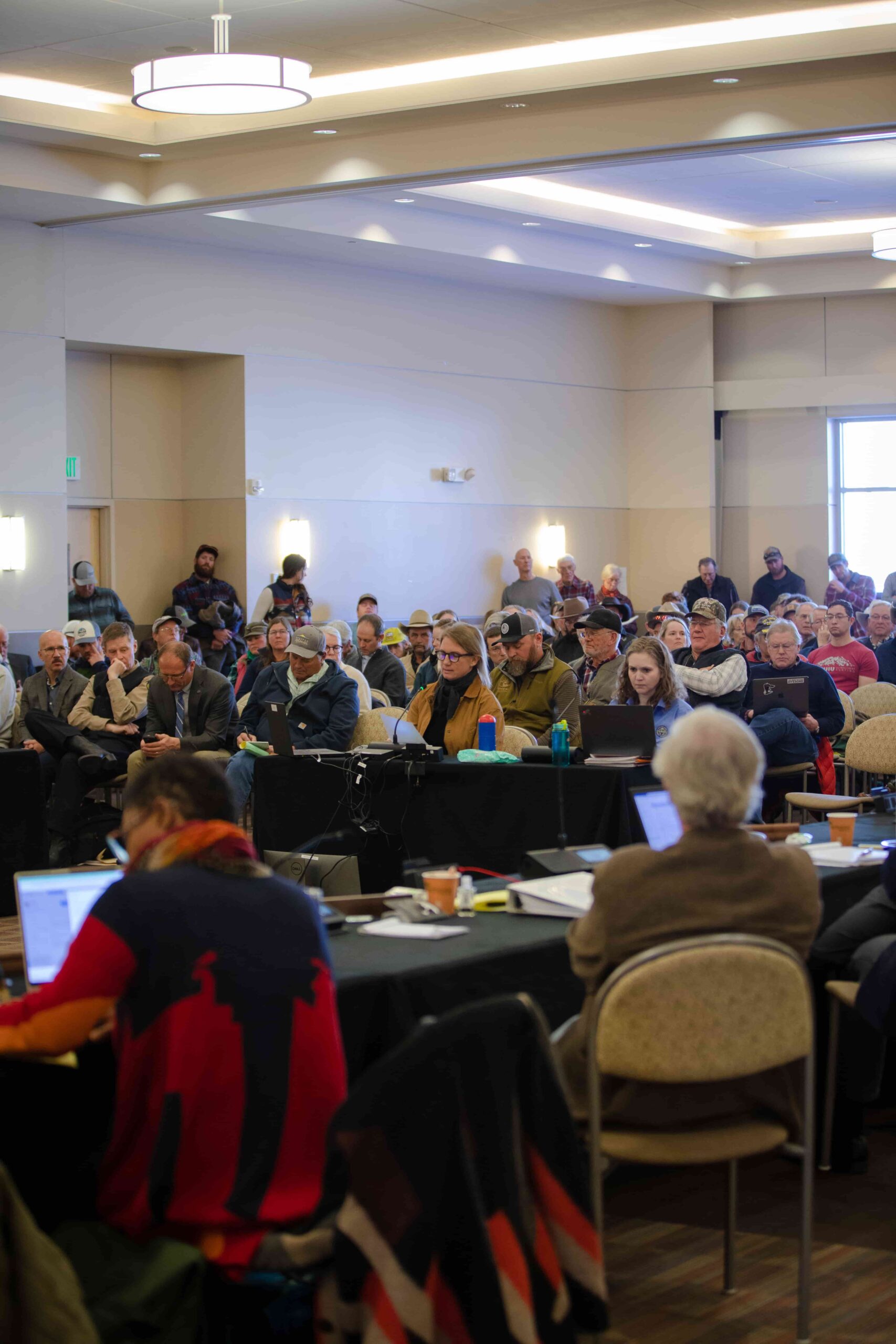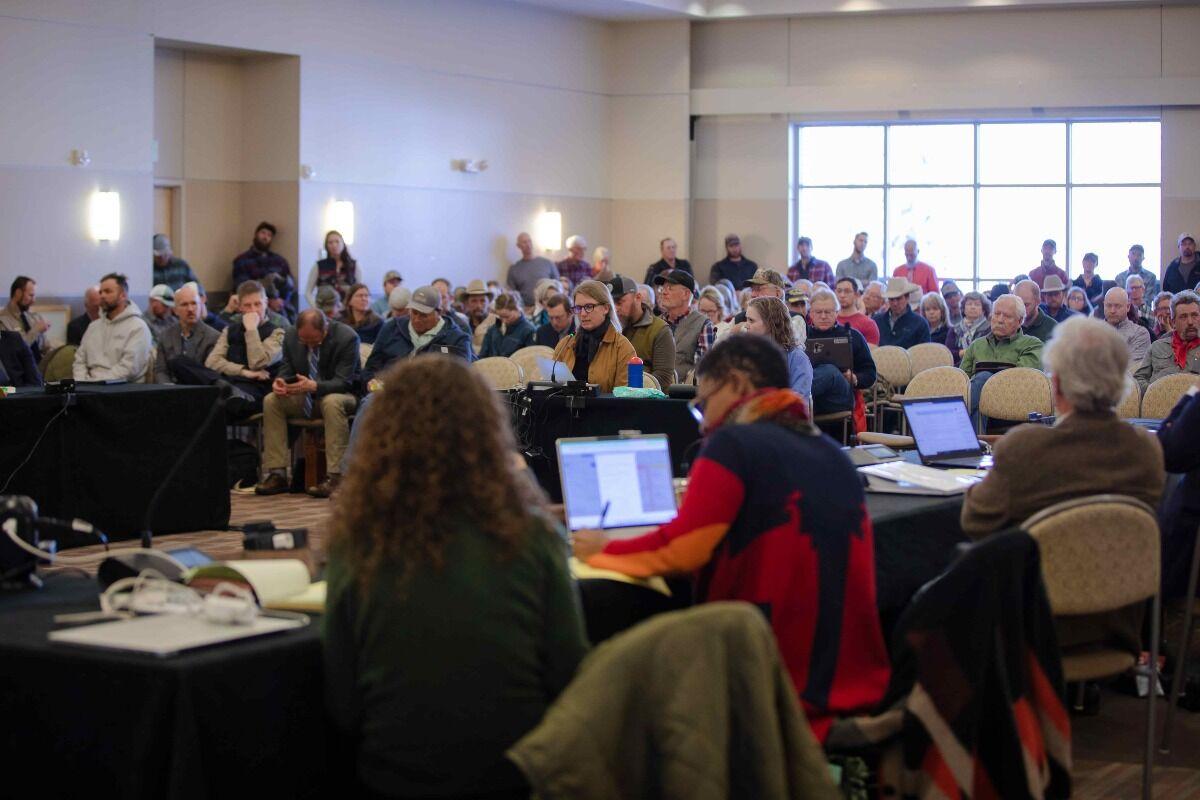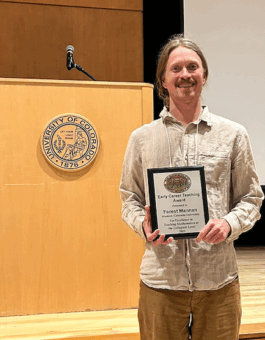When the reintroduction of wolves to Colorado was permitted after Proposition 114 was passed into law in November 2020, Colorado Parks and Wildlife (CPW) was tasked with creating a Wolf Restoration and Management Plan. CPW has drafted a four-phase plan and opened the conversation to public opinion. Western Colorado University was honored to host CPW in a public forum to inform on the current plan draft and seek out opinions from those in the Gunnison community.
The Importance of Public Comment
John Livingston, CPW Public Information Officer, said the public comment period is critical to the plan’s formation. The team of commissioners is in the process of traveling around the state to hear as many comments from Coloradans as they can.
“Since that time of voter approval, [CPW] staff has been working really hard on coming up with this plan to see how the reintroduction could work for as many Coloradoans as possible,” said Livingston. “Coloradans are engaging respectfully and passionately at a historic time for Colorado wildlife, and we want to thank everyone who has taken the time to read the draft plan and provide comments that will help shape how wolves and all wildlife are managed in the state.”
For this public forum, a diverse group of community members gathered in the South Ballroom of the University Center at Western to share their comments and concerns about the reintroduction plan.
 Biology and the Wolf Population
Biology and the Wolf Population
“This process is not perfect,” said Patrick Magee, Associate Professor of Wildlife and Conservation Biology at Western, “but it’s a pretty cool process where the Colorado Wildlife Commission is really trying to get everybody’s feedback.”
According to Magee, the reintroduction of wildlife has two main benefits on the ecosystem’s function. The first one has to do with trophic cascades. This system describes the interaction between predators and prey. In a trophic cascade, there is a predator, a prey, and the prey’s food source. If one part of that cascade is removed, the other two will likely over-populate or eradicate entirely.
“[A trophic cascade] is kind of a top-down ecological force that, when you remove that top predator, that force is gone, and things get a little chaotic underneath,” said Magee.
The second is known as a non-consumptive effect of predators or, according to Magee, the “ecology of fear.”
“Just having a wolf in the system changes the behavior of other organisms,” said Magee. “Having a big predator that’s stalking an organism totally changes their physiology and their behavior.”
This “ecology of fear” is a source of control. The example Magee gave was how this control would further affect the land’s vegetation. When prey senses a big predator, behaviorally, they will gather into tight herds where they stick together. This causes them to eat all the vegetation in one spot until that area becomes inhabitable, so they must move around.
“By moving around the landscape, it takes the pressure off the vegetation and allows it to recover and regrow,” said Magee.
Proponents Against Wolf Release in Colorado
While a small majority of Coloradans voted to pass the proposition into law, many community members are concerned for their livelihoods. Gabby Zaldumbide, a local hunting guide, and Dan Strausbaugh, a range rider for a local ranch, participated in the forum to voice their opinions.
“There are definitely reasons for wanting to see wolves reintroduced,” said Strausbaugh, “but the counter side of the argument is predominantly coming from stakeholders in the form of ranches, agriculture producers, as well as hunting and fishing guides that make their living in the wild lands.”
The concern of these stakeholders is that wolves are apex predators that were initially eradicated due to agricultural production. With this reintroduction, the community fears the impact on their livelihoods in the form of loss of livestock and hunting game.
Zaldumbide said that the area where wolves are theoretically going to be reintroduced into the Gunnison Valley is currently an over-the-counter elk unit meaning there are unlimited elk hunting licenses for second and third rifle seasons. Her understanding is that if the wolf reintroduction causes the elk herd population to decline dramatically, that unit may change from over-the-counter to the draw system.
“From the hunting and fishing perspective, it’s really competitive to get big game hunting permits for outfitters,” said Zaldumbide. “If we see the elk herd decline, there will be a smaller customer base for these outfitters because of the limit of the draw system.”
Inviting Discussion
Both the concerns and benefits of the wolf reintroduction to the land were welcomed at the public forum. The CPW is encouraging people to submit their comments on the plan by the deadline of February 22, 2023. Coloradans can either attend their local public forum or submit their opinions online here. Though the reintroduction of wolves to Colorado is a touchy subject with passion on both sides, members of the Gunnison Valley came to Western’s campus and shared their diverse thoughts with dignity and respect.
“It’s been extremely civil and honestly pleasant,” said Zaldumbide. “I’ve just really appreciated how polite our community has been to each other.”
Author Credit: Kinlee Whitney
Photo Credit: Olivia Reinhardt


